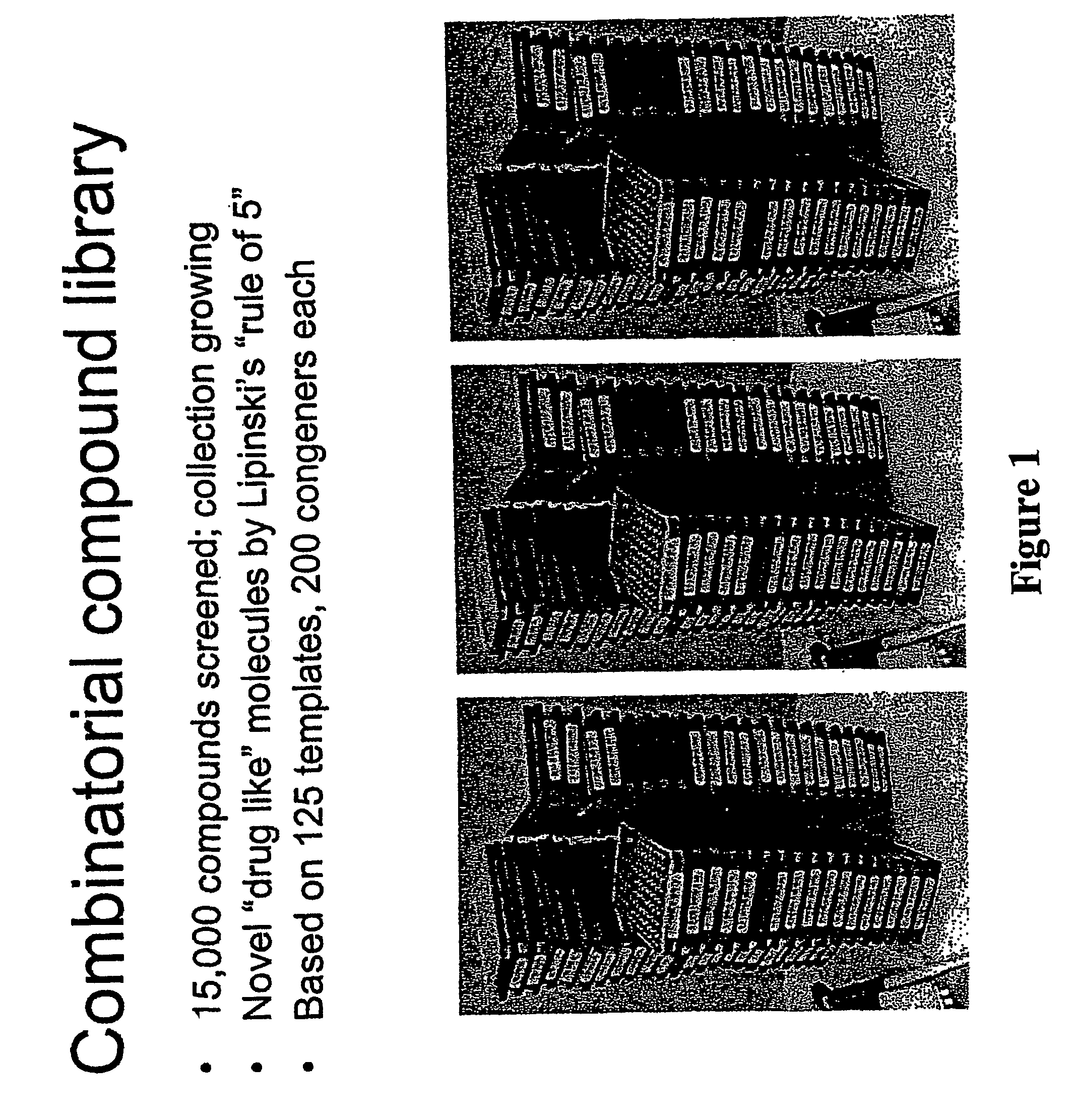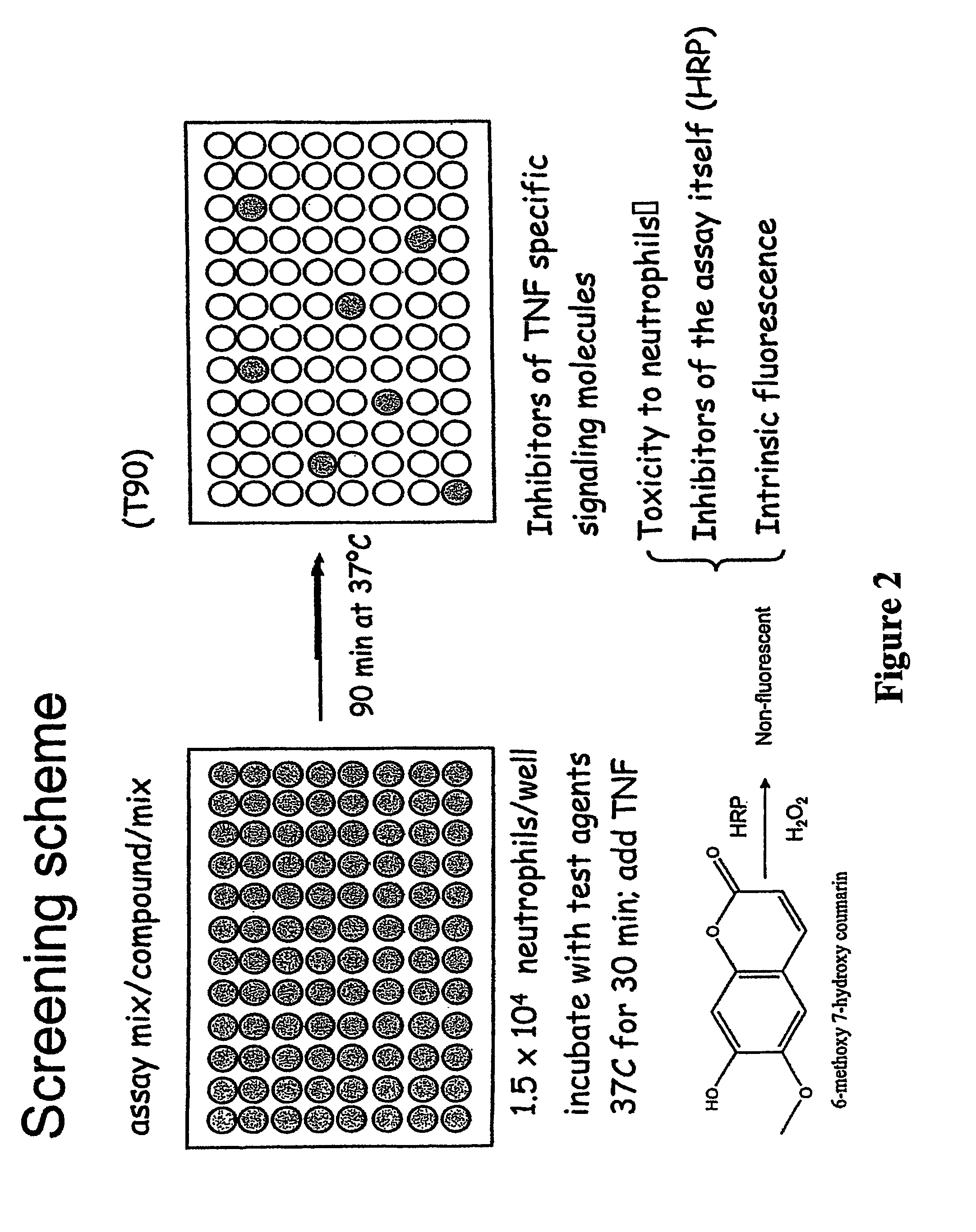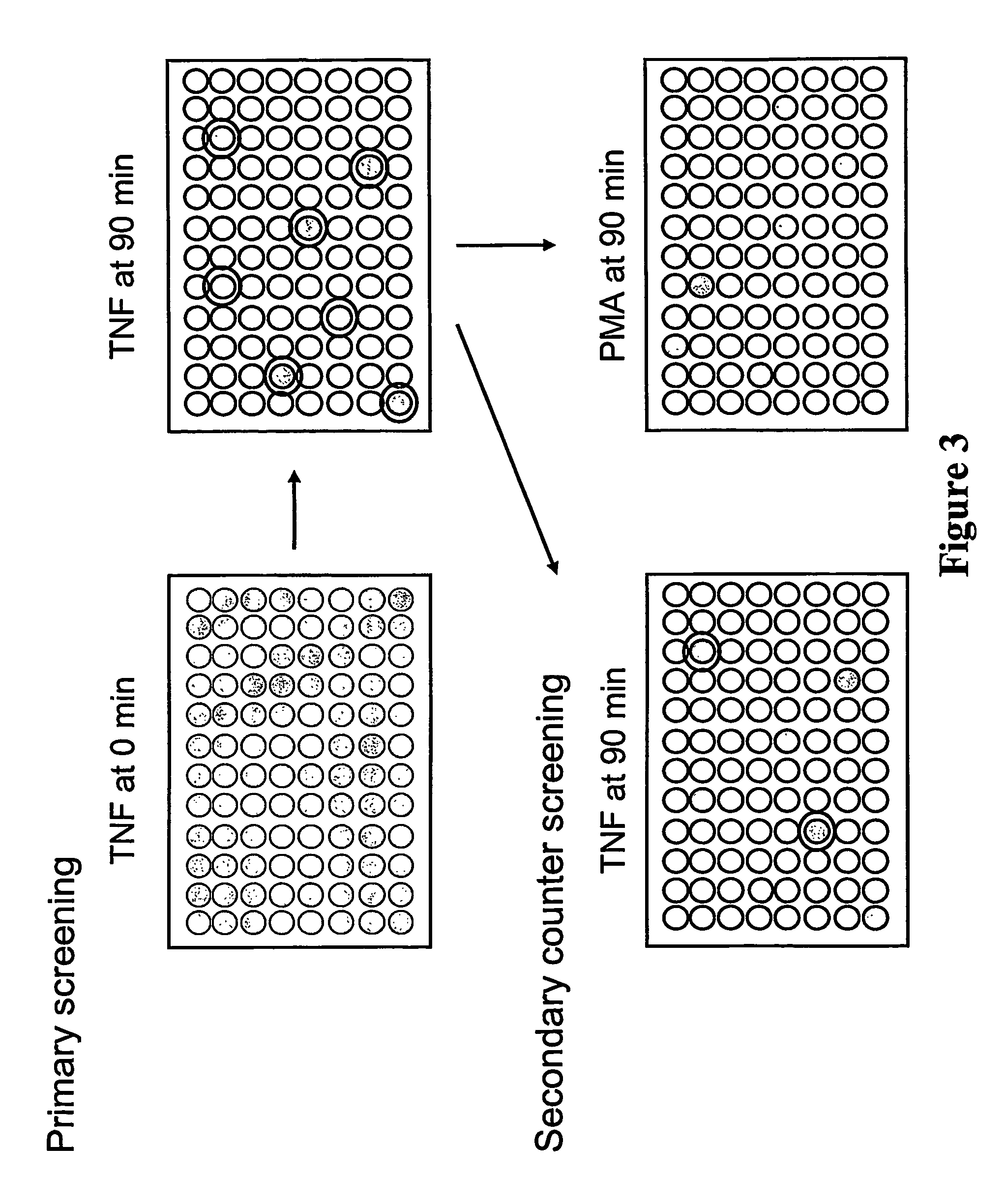Treating an inflammatory disorder or inhibiting respiratory burst in adherent neutrophils with chemical inhibitors of neutrophil activation
a technology of chemical inhibitors and neutrophils, which is applied in the direction of immunological disorders, drug compositions, biocides, etc., can solve the problems of impairing host defense, particularly problematic, and the risk of affecting the defense of host cells
- Summary
- Abstract
- Description
- Claims
- Application Information
AI Technical Summary
Benefits of technology
Problems solved by technology
Method used
Image
Examples
example 1
Screening of Chemical Library for Specific Inhibitors of TNF and PMA-Triggered H2O2 Release
[0080]High Throughput Screening (HTS) of a chemical compound library selected by Dr. Tarun Kapoor at Rockefeller University was carried out to identify specific inhibitors of TNF and PMA-triggered H2O2 release by primary human neutrophils. As shown in FIG. 1, the library used for screening consists of 15,000 compounds generated from 125 combinatorial templates each template with 200 different side chain modifications. The compounds are “drug like” compounds, i.e., small molecules that have high membrane permeability for efficient delivery of molecules across the cell membrane. Out of the 15,000 compounds screened, 460 compounds showed over 90% inhibition at 20 μM during primary screening. Among the 460, 190 were tested against both TNF and PMA triggered H2O2 release to eliminate toxic compounds for neutrophils and inhibitors of protein kinase C (PKC) or the assay itself. After ...
example 2
H2O2 Release and Degranulation of Neutrophils
[0086]Respiratory burst was measured as described elsewhere (De la Harpe et al., “A Semi-Automated Micro-Assay for H2O2 Release by Human Blood Monocytes and Mouse Peritoneal Macrophages,”J Immunol Methods 78:323-336 (1985), which is hereby incorporated by reference in its entirety). Briefly, 96-well flat-bottomed plates (Primaria, Falcon) were coated with 50 μl / well of FBS in 5% CO2 at 37° C. for at least 1 h and washed three times with 0.9% saline. Neutrophils (1.5×104) were added to triplicate wells containing 100 μl of reaction mixture (2.4 nm scopoletin, 0.5 μg horseradish peroxidase (HRP), and 1 mM NaN3) and stimulated with either buffer control, TNF (PreproTech, London, UK) or phorbol myristate acetate (PMA), each at 100 ng / ml. The reduction of scopoletin by H2O2 was recorded every 15 min on a plate-reading fluorometer until H2O2 release reached plateau and the amount of H2O2 released calculated as described (De la Harpe et al., “A ...
example 3
Test of Reversibility of TNF Inhibitory Effect
[0088]Neutrophils were incubated with test compounds I-V or DMSO at 37° C. for 30 min in FBS coated tubes (Falcon, Cat. Number 352063), washed twice with cold KRPG, and plated in 96 well plates before stimulation with TNF (100 ng / ml) or an equivalent volume of KRPG buffer as a control. On a separate plate, compounds were added back to the neutrophils that were washed off compounds, and cells were stimulated to ensure neutrophils' capacity to respond. Neutrophils incubated with each compound without washing were also stimulated for comparison. FIG. 8 shows the results of the reversibility test. Comp II appears to have the greatest reversibility.
PUM
| Property | Measurement | Unit |
|---|---|---|
| concentrations | aaaaa | aaaaa |
| volume | aaaaa | aaaaa |
| pH | aaaaa | aaaaa |
Abstract
Description
Claims
Application Information
 Login to View More
Login to View More - R&D
- Intellectual Property
- Life Sciences
- Materials
- Tech Scout
- Unparalleled Data Quality
- Higher Quality Content
- 60% Fewer Hallucinations
Browse by: Latest US Patents, China's latest patents, Technical Efficacy Thesaurus, Application Domain, Technology Topic, Popular Technical Reports.
© 2025 PatSnap. All rights reserved.Legal|Privacy policy|Modern Slavery Act Transparency Statement|Sitemap|About US| Contact US: help@patsnap.com



